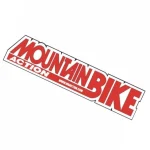REVIEW: OZARK TRAIL RIDGE – WALMART’S CHEAP MOUNTAIN BIKE THAT CAN
Surprising performance from Walmart's incredibly inexpensive hardtail
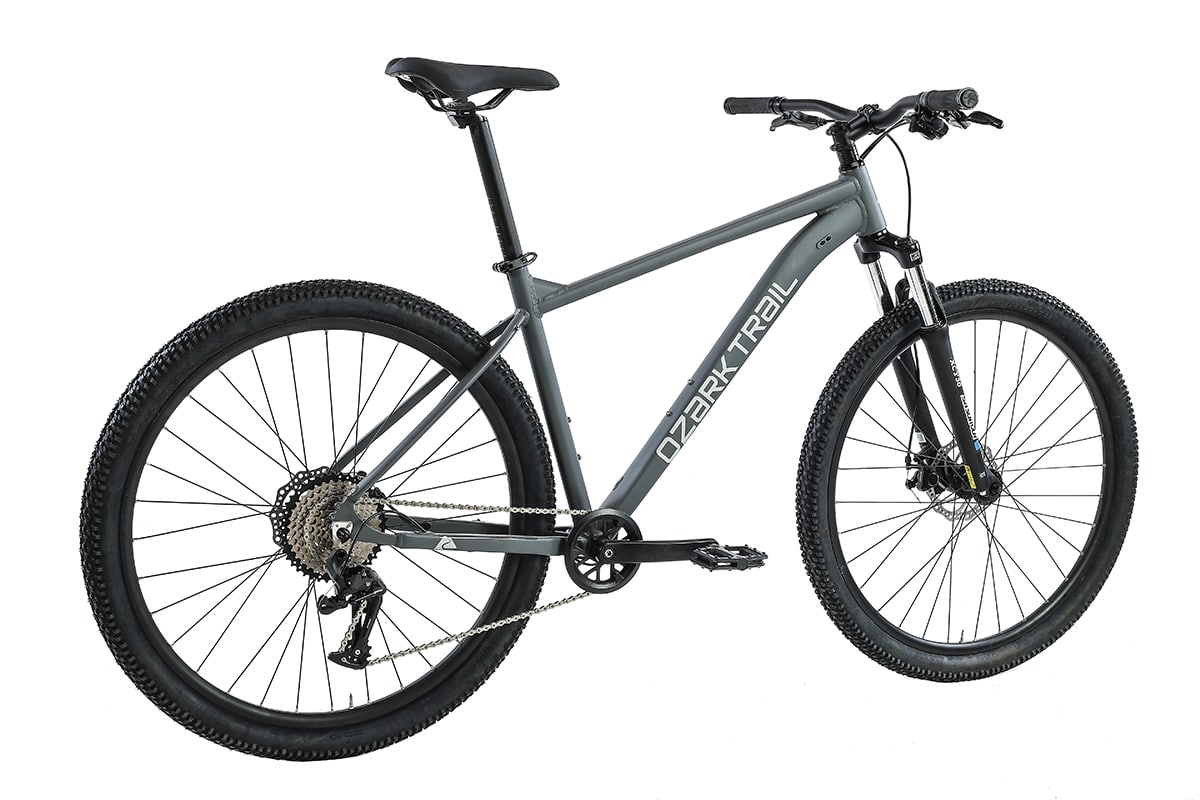
REVIEW: OZARK TRAIL RIDGE – WALMART’S CHEAP MOUNTAIN BIKE THAT CAN
We were strolling through the aisles of Walmart one day when something caught our eye in the bicycle department—a mountain bike. This Ozark Trail-branded Ridge mountain bike didn’t look like your typical department-store bike. Instead of a heavy, mild steel frame, it has a rather nice-looking aluminum one, and the rest of it looked rather decent. We couldn’t help but wonder how this $398 mountain bike rides. Our curiosity got the best of us, so we strolled into our local store and bought one to see what it’s made of in every sense of the word. It’s probably not what you think.
FRAME
Walmart says the Ridge’s frame is made of 6061 aluminum. Surprisingly, it has internal cable routing, as well as ports for a stealth-routed dropper seatpost. The rest of the frame is standard-issue spec with a tapered head tube, threaded bottom bracket, and water-bottle bosses located on the seat tube and downtube.
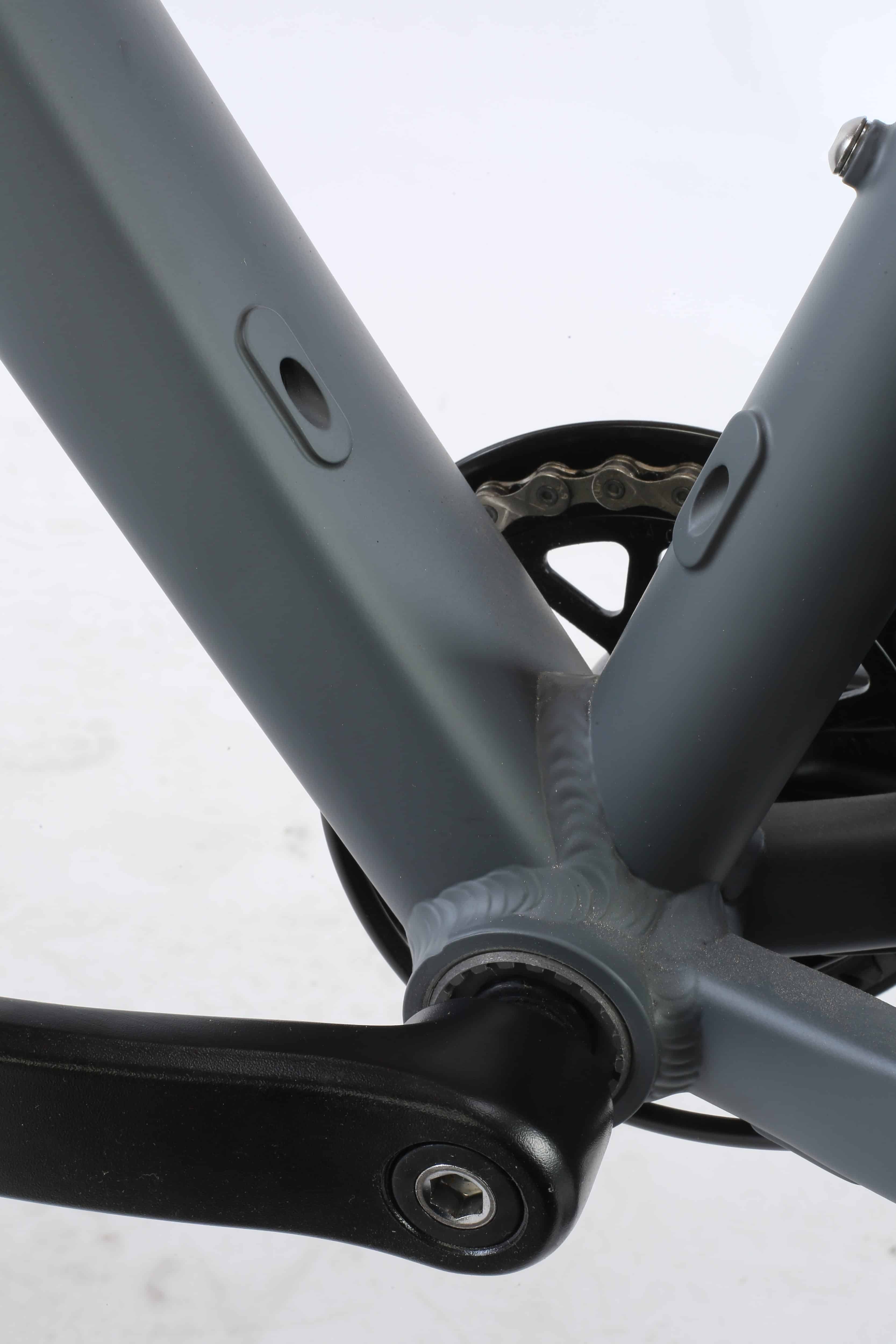
There are also built-in rack mounts, a kickstand mount and non-Boost 135mm quick-release-style dropouts. Interestingly, the frame’s stays are robust looking right up until they connect to the comparatively spindly looking dropouts, which also bow in a touch. It would not surprise us one bit if there is a Boost thru-axle version of this frame out in the world somewhere.
There were only two sizes available: medium (17 inches) and large (19 inches) but Walmart has recently added a third size small (15″). Without geometry charts traditionally provided for most mountain bikes, we had to measure our size-large test bike ourselves. It came in with fairly modern numbers as far as cross-county hardtails are concerned, with a 66.8-degree head angle, 73-degree seat tube angle and 482mm reach.

COMPONENTS
There is only one build of Ozark Trail’s Ridge. It comes with a simple LTWOO A5 9-speed, 1×9 drivetrain with a trigger-style shifter. Shifting performance is as good as any other value-oriented drivetrain or slightly better. Even under moderate pedal loads, the system shifts fairly quickly and smoothly. The biggest things it’s missing compared to far more expensive versions are a clutch in the derailleur to control chain slap and a narrow/wide chainring tooth profile to keep the chain on.
The cranks are 170mm-long Prowheel-banded forged aluminum with a square-taper spindle. Historically, square-taper spindles are a point of failure as they deform, but these cranks withstood some pretty good hits without a complaint.

Its brakes are simple Radius-branded mechanical disc brakes with 160mm rotors. They perform well enough after a simple mod, but more on that later. The hubs are unbranded, and so are the narrow-looking rims, but it’s nice to see eyelets on them. Kenda’s K1153 tires feature wire beads and are 2.35 inches wide. We were somewhat surprised to see Presta-style valves after decades of Schrader style on bikes like this.
The cockpit consists of unbranded aluminum parts that get the job done in a workman-like fashion. We were really happy to see a quick-release seatpost clamp since it allowed us to drop it for the descents. Although somewhat small in diameter, the lock-on grips are surprisingly comfortable and tacky. Interestingly, the bike comes with a 300-pound rider weight limit that is most likely related to the components more than the frame.
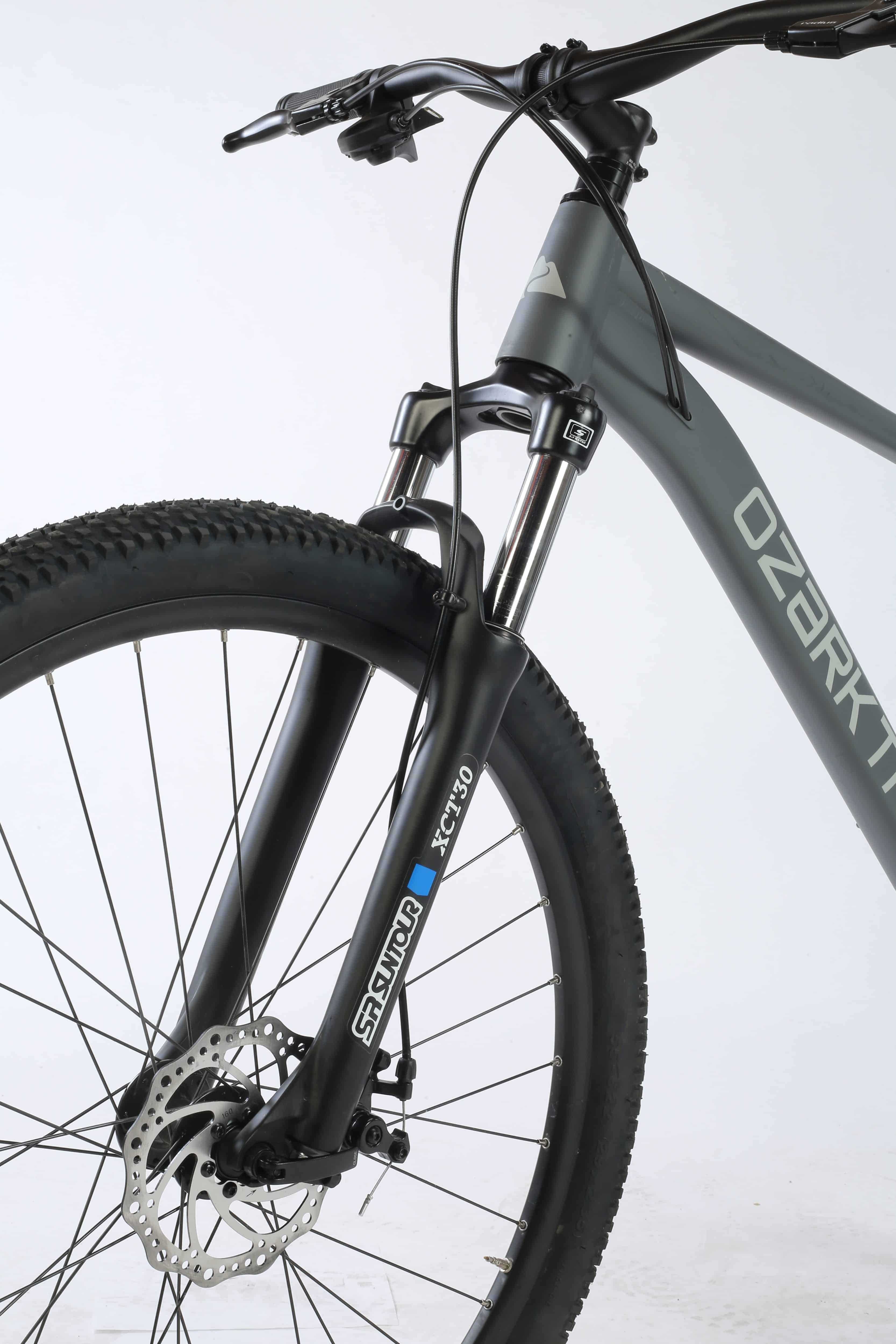
SUSPENSION
A 100mm-travel SR Suntour CM fork graces the front end of the Ridge. It’s a basic fork with coil springs in each leg with external preload adjusters. You won’t find any damping adjustments because there aren’t any—damping that is. Instead of relying on a hydraulic damper like most higher-end forks, this basic Suntour model relies on friction to slow things like compression and rebound down.
THE BUILD
Buying the Ridge was nothing like the bike-shop experience. We were helped by a nice lady who unlocked the bike from its rack and accompanied us to the register at the neighboring electronics section where they sold us the bike, and we walked out the door. A quick safety check revealed that all but one stem face-plate bolt were tight, the headset loose and the rear derailleur was pretty far out of adjustment.
The brakes needed a little fine-tuning but functioned well enough. Its tires needed air, but what alarmed us most was the barely finger-tight quick-release skewer on the front wheel. It probably wouldn’t have fallen off, but these bikes should probably have at minimum a safety check from a bike shop following purchase. The bike is also available online, so the final assembly will be up to you.
CLIMBING
This might come as a surprise to many, but the test riders were all smiles when it came to the climbs on this bike. It scoots up them with head-shaking ease. Perspective is key here; you’re not flying uphill like you do on a high-dollar XC racer, but it’s not a painful experience, either. We were even able to scale climbs and clean sections that have stopped other far more expensive bikes in their tracks.
The rider’s cockpit is roomy and the seat tube angle is ideal for powering the pedals. The saddle even drew high marks for its overall shape and comfort. Sure, it’s a bit on the soft side, but it strikes a nice balance between plushness and support for less experienced behinds. The gear ratios felt well suited to climbing thanks in part to the 30-tooth chainring that made steeper sections on the heavier-than-average hardtail doable.
Overall, while climbing the Ozark Trail there is, dare we say it, a lively feel to it that really contradicts its price.
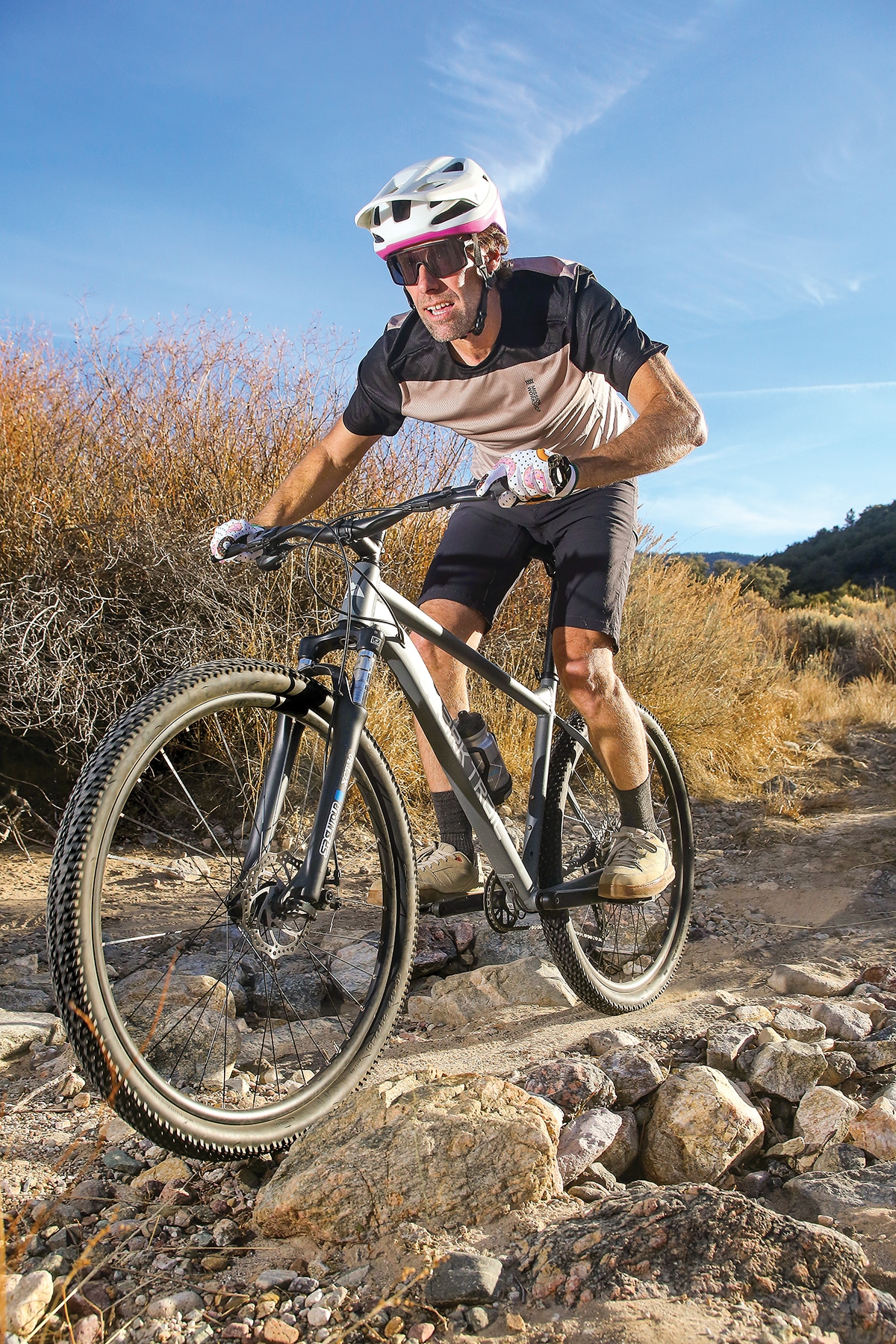
DESCENDING
Descending performance does not quite match its climbing prowess, but it’s still pretty good. Since the bike doesn’t have a dropper, we had to go old-school with our technique by stopping at the top of each descent, loosening the quick release and dropping the saddle. Everything feels natural and normal until you reach a certain speed, then the bike’s limitations make themselves known.
The first and most striking thing is the fork’s performance. Without a real damper of any sort, the fork picks up small trail hack quite well, but as speeds increase, so did our distrust in the front end. It tends to rebound uncontrollably from bigger hits, and it tops out with a clunk when you leave the ground on jumps.
The fork is old-school tech, like early ’90s tech that relied on friction to control movement, and the results are similar, or perhaps even worse, since there is actually less friction in this one. What this fork does best is add comfort to the ride at low to mid-trail speeds, not control. Hard-charging riders need not apply.
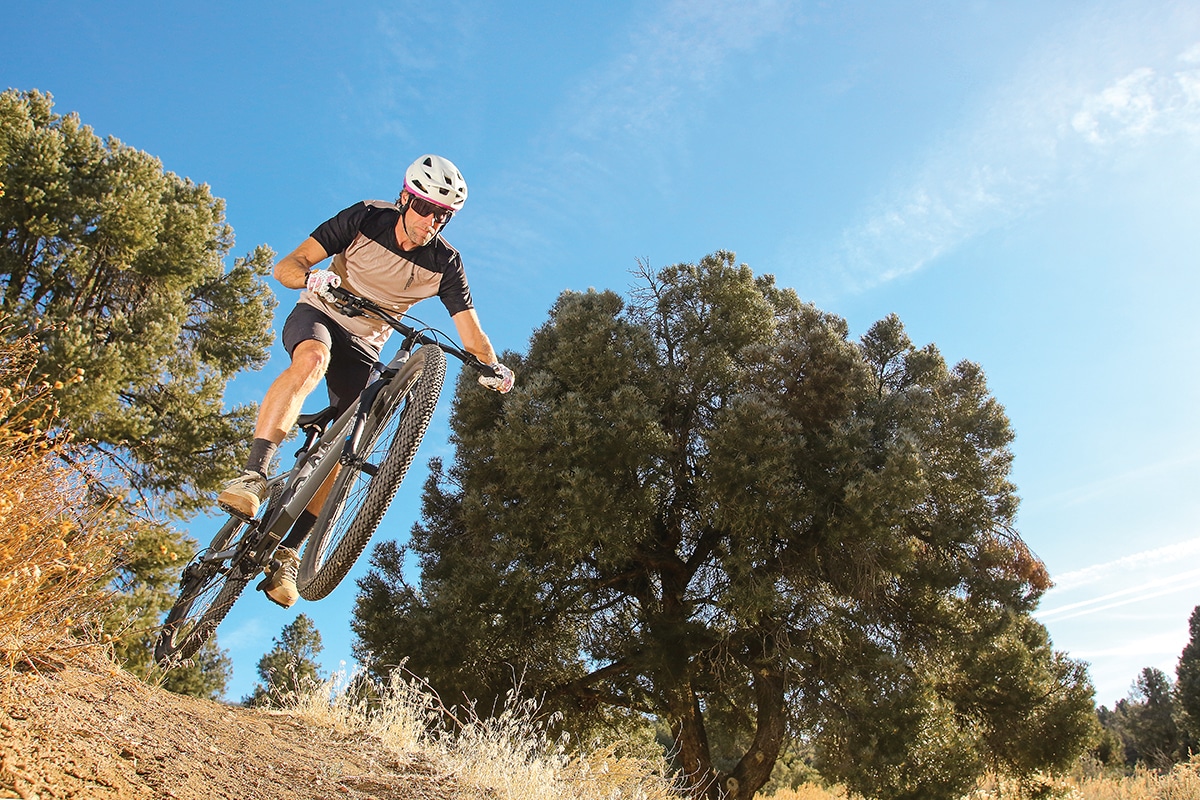
Handling-wise, we are quite impressed with the bike’s stability and steering response. It feels like a modern hardtail with trail-friendly cross-country handling. Its reach and head angle are springily confidence-inspiring right up until the trails start getting on the really steep side. Kenda’s tires are also shockingly good, offering decent traction across a wide range of conditions. When paired with flat-pedal shoes (costing a third of the bike’s price), the bike’s plastic flat pedals even felt grippy and supportive—good stuff.
The real fly in the ointment for most test riders lies in the rear brake’s feel and performance. Since these are mechanical disc brakes, they are only as good as the cable connecting them. In the case of the front brake with its shorter, straighter cable routing, it works well. While the internal cable routing looks clean and modern, the extra bends, particularly at the chainstay entrance and exit, create extra friction, making the brake lever feel heavy and the action more light-switch-like. It is hard to modulate the rear brake’s power.
Instead of complaining, we did something about it, routing the brake cable outside of the chainstays with zip-ties. This mod that straightens the cable’s path costs just a few cents and made a significant improvement in rear-brake feel and power.

WHAT DID WE LOVE?
Everybody likes the way the Ozark Trail looks. Its lines, components and geometry all look like a modern mountain bike. As long as descending speeds and terrain are kept reasonable, its overall performance is as good as it looks, too. What shocked us most is nothing broke or bent under moderately hard riding. Best of all is the price. We wish all mountain bikes cost so little.
WHAT DID WE HATE?
It might sound like blasphemy, but there is not much to hate about the Ridge. If you consider the price, it delivers an outstanding value that far exceeds our expectations. All that said, we wish the rear brake worked better, and it could with better cable routing.
We also didn’t care for the loud chain slap on the chainstay. Since there isn’t a clutch in the derailleur’s spring to control chain slack, padding is sorely needed on the chainstay. A few dollars spent on self-fusing tape silences things nicely. And then there’s the build and tune quality, but this is just part of the deal when buying bikes like this.

BOTTOM LINE
Perspective is key with the Ozark Trail Ridge. It’s not the typical cutting-edge, high-performance model we test and all dream of. However, it pushes the boundary of reasonable entry-level performance to all-time record low in terms of price. Hardcore mountain bikers often pay far more for a single component upgrade than this whole bike costs.
We are not suggesting those already in the sport buy one of these for themselves. But, for a relative or a friend who is a beginner with a very small budget, this bike is a no-brainer and worlds better than what you’d get in this price range a few years ago.
It’s a gateway for those who can’t or simply don’t want to spend a lot of money to go mountain biking and have a good experience while doing it. It’s the kind of bike that sparked the love for the sport for some of us here at Mountain Bike Action and one that will bring many more into the sport in the coming years.
OZARK TRAIL RIDGE
CATEGORY: Cross-country
WHEEL SIZE: 29″
SUSPENSION: 100m (front only)
Price: $398
Weight: 32.8 pounds (without pedals)
Sizes: M, L (tested)
Frame tested: 6061 aluminum
Fork: SR Suntour CM, 100mm travel
Wheelset: Aluminum 29″
Tires: Kenda K1153 (29″x2.35″)
Seatpost: Generic aluminum
Saddle: Generic soft, black
Handlebar: Generic aluminum
Stem: Generic aluminum
Grips: Generic lock-on
Headset: Generic
Brakes: Radius mechanical disc
Rotors: 160mm (f)/160mm (r)
Rear derailleur: LTWOO A5
Shifters: LTWOO A5 trigger 9-speed
Crankset: Prowheel forged aluminum, 170mm
Bottom bracket: Generic square taper spindle
Cassette: 9-speed, 11-42T
Chain: 9-speed
Chainring: 30-tooth
GEOMETRY SIZE LARGE
Head tube angle: 66.8°
Effective seat tube angle: 73°
Reach: 482mm (19″)
Stack: 609mm (24″)
Bottom bracket height: 305mm (12″)
Chainstay length: 438mm (17.25″)
Wheelbase: 1,245mm (49″)

